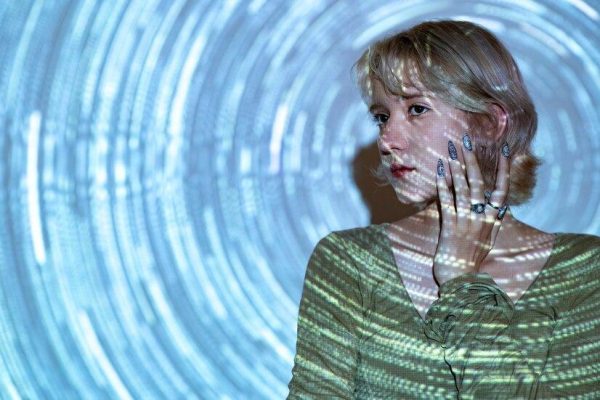The boundaries between technology and daily life have blurred, making it hard to distinguish where one ends and the other begins. From dawn till dusk, no matter where we are – in a fluorescent-lit cubicle, on our couch, or Even working from a parked camper van – it creeps into every moment. The era of powering down a desktop computer and leaving work behind is long gone. The fine line between connection and overload is a delicate balance to strike. Finding a sweet spot that takes advantage of digital perks without sacrificing precious time is no easy feat. The link between tech and mental health is a pressing concern – in this post, we’ll separate fact from fiction and offer actionable advice for a healthier mindset.

How Does Digital Technology Affect Mental Health?
The ways technology can impact our minds are alarming – think heightened anxiety, darker moods, and sleepless nights. Constant notifications and the relentless pressure to stay connected can leave us feeling overwhelmed and burnt out.
As we scroll through our feeds, it’s easy to overlook the psychological costs. The consequences of excessive social media use can manifest as depression, anxiety, crumbling self-confidence, and body image issues – all taking a heavy toll on our mental health. As we swap face-time for screen-time, a creeping sense of loneliness can set in, quietly eroding our mental health.
Mental health gets a helping hand from the advances being made in technology. Without access to social resources, people can feel lost and disconnected. But here, they can tap into a community that cares, finds strength in numbers, and supports one another. Pandemic or not, access to quality mental health care remains a pressing issue – teletherapy is helping to address this inequality, bringing solace to those living in rural areas where resources are scarce.
Forget about deadlines and to-do lists for a while and indulge in some relaxing screen time. Your favorite TV characters or movie heroes will be happy to keep you company and take your mind off things. Services like Paramount Plus have a lot of content in various genres. But you may encounter the message “Paramount Plus not available in your region”. There is a solution and it is a VPN. You need to know how to use VPN on Paramount Plus and this will be useful to you not only on this streaming service. The procedure is simple: install VeePN on your device, you can even use a free trial, log in to your account and connect to the server. Your IP address and region have been changed.
What is the Role of Technology in Mental Health Care?
Technologies are capable of many things, but they are only tools and it cannot be said that they negatively affect a person’s psychological state. If you feel increased anxiety due to cybersecurity risks, just use a VPN app for iOS and a password manager. This will reduce the risks many times over. There are also special technologies for treating psychological disorders and here are some of them.
1 Digital Therapeutics (DTx)
Digital therapeutics (DTx) leverage behavioral interventions to offer promising solutions for the prevention and management of various mental health issues. Between 2010 and 2019, over 500 clinical trials were conducted on digital therapeutics, with more than 40% focusing on mental health. One therapeutic area where these innovations could greatly enhance standard care is attention deficit hyperactivity disorder (ADHD).
Currently, ADHD treatments mainly rely on pharmacological interventions, which can come with long-term risks and side effects. However, a groundbreaking development in June 2020 saw the FDA approve EndeavorRxTM (AKL-T01) as a prescription digital therapeutic for children with ADHD. Unlike most digital therapeutics that require patients to be awake, the Monarch external Trigeminal Nerve Stimulation (eTNS) system is unique in its ability to operate while the patient is asleep. This compact electronic device stimulates the trigeminal nerve in the brain through a small patch applied to the forehead before bedtime. It targets brain areas associated with mood disorders, epilepsy, and attention.
2 Non-Invasive Brain Stimulation Technology
Non-invasive brain stimulation (NIBS) techniques utilize electrical currents generated through magnetic fields to treat mental and neurological disorders. When paired with psychosocial interventions, NIBS has demonstrated a remarkable ability to alleviate moderate to severe depressive symptoms. Depression, a pervasive mental illness, affects over 264 million individuals worldwide. One innovative example of this mental health technology is a device from Pulvinar Neuro, a UNC-Chapel Hill spinout. This device works by altering brain activity patterns for patients with mental illnesses. By applying various waveforms, it can shift brain activity to provide significant symptom relief for many patients. Future research should focus on providing more evidence of the effectiveness of combination treatments compared to NIBS or psychosocial interventions alone.
3 Virtual Reality Therapy for Psychosis Treatment

Virtual Reality (VR) therapy, also known as Visual Simulation Technology (VST), leverages computer-generated settings to offer realistic and immersive experiences. Forget indirect approaches – this bold new strategy puts individuals squarely in the driver’s seat, where they can tackle their fears and anxieties head-on, rewiring their mental health for the better. From psychosis to anxiety disorders, the benefits of VR therapy are undeniable, with studies consistently demonstrating its ability to drive positive change in mental health outcomes.
In 2022, the FDA granted a British startup, OxfordVR, Breakthrough Device designation for its VR-based cognitive behavior therapy aimed at treating schizophrenia and other severe mental illnesses. Assuming trials yield positive results, this designation will virtually guarantee a rapid approval process. For individuals with psychosis, everyday activities like taking a bus ride or shopping can be debilitatingly anxious. OxfordVR’s VR solution lets patients confront and cope with these scenarios in a controlled setting. Imagine having access to cognitive behavior therapy (CBT) anytime, anywhere, thanks to clever automated prompts that steer the conversation. It’s talk therapy for the digital age.
Conclusion
For the first time, mental health is within everyone’s grasp, freed from limitations that discriminated and isolated those who needed it most. Homeward bound, you can now stay put and connect with a mental health pro from the coziness of your own home. What happens when tech meets mental health? Cutting-edge innovations emerge, such as handheld therapy tools and fitness trackers that monitor our minds as much as our bodies. Imagine finding solace in expertly curated meditation sessions, harmonious soundscapes, and calming vibrations – all carefully crafted to soothe your mental bruises.


